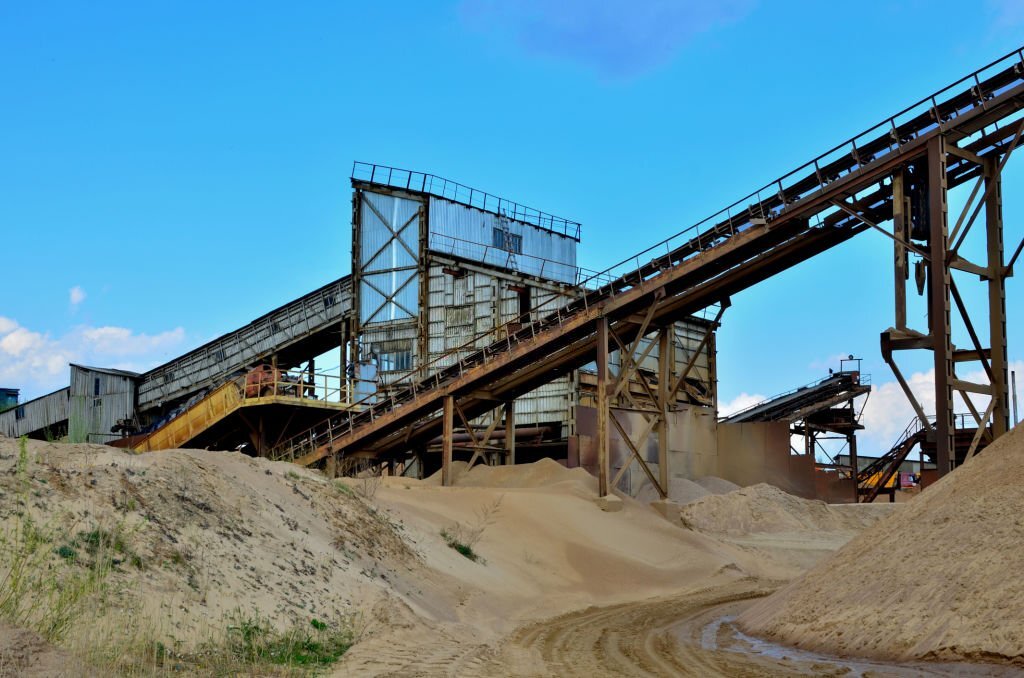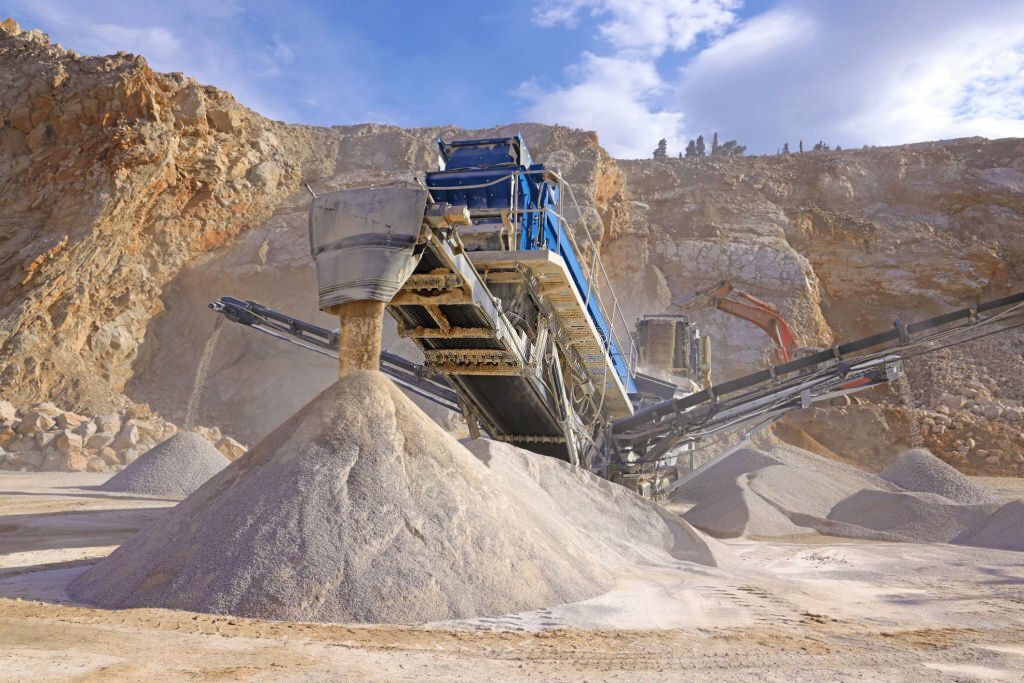
Introduction:
In the intricate world of material processing, crushing plants stand as the linchpin, transforming raw materials into the building blocks of countless industries. Understanding the main components of a crushing plant is essential for unlocking its full potential in efficiently breaking down diverse materials. This article delves into the fundamental elements that constitute a crushing plant, shedding light on their individual roles and collective synergy.
Primary Crushers:

Central to the functionality of every crushing plant, the primary crushers stand as the vanguards of the raw material reduction process. Tasked with the monumental responsibility of initiating the transformation, these crushers are the workhorses that bear the brunt of breaking down large raw materials into more manageable sizes. Among the popular choices in this category are jaw crushers and gyratory crushers, each wielding distinct capabilities in the pursuit of efficient material reduction.
Jaw crushers, characterized by their robust design and versatile applications, exert forces through a compressive mechanism, efficiently breaking down materials with a reciprocating motion. On the other hand, gyratory crushers utilize a different approach, employing a cone-shaped gyrating chamber that imparts a more comprehensive reduction of rocks and minerals. The sheer power exerted by these primary crushers is awe-inspiring, as they navigate through the toughest geological compositions to lay the foundation for subsequent stages in the crushing process. It is within these machines that the journey from raw material to valuable end-product begins, marking the inception of a comprehensive and efficient material processing operation within the realms of a crushing plant.
Secondary Crushers:

As the material undergoes its initial reduction in the primary crushing stage, the baton is seamlessly passed to the secondary crushers, which assume a pivotal role in refining and fine-tuning the processed material. At this juncture, cone crushers and impact crushers emerge as the protagonists in the narrative of material refinement. Cone crushers, with their cone-shaped crushing chambers, leverage compression to achieve finer crushing. This versatile design allows them to handle a spectrum of materials with varying hardness, offering precise control over the final product size.
On the other hand, impact crushers employ a different mechanism, utilizing the force of impact to break down materials. Their design often involves a high-speed rotor that imparts kinetic energy to the incoming material, resulting in efficient and controlled fragmentation. Both cone crushers and impact crushers cater to a diverse array of applications across industries, from aggregate production in construction to the finer crushing required in mining operations.
In this orchestrated sequence of crushing stages, secondary crushers play a crucial role in shaping the final product. Their ability to provide finer crushing not only refines the material for specific applications but also enhances the overall efficiency of the crushing plant by preparing the material for subsequent processing stages.
Conveyors:

In the intricate web of a crushing plant, conveyors emerge as the vital arteries that facilitate the seamless flow of material between various stages of the processing journey. These robust and versatile components play a pivotal role in optimizing efficiency by ensuring a continuous and organized movement of material. From the very inception at feed hoppers to the culmination in stockpiles, conveyors act as silent choreographers orchestrating the ballet of raw materials through each stage of the crushing process.
The significance of conveyors lies not only in their ability to transport material but also in their role in streamlining operations. By facilitating a smooth and continuous flow, conveyors prevent bottlenecks, ensuring that each component of the crushing plant operates harmoniously. This orchestrated movement not only enhances the overall efficiency of the plant but also contributes to the timely and effective processing of raw materials.
Conveyors are the unsung heroes that enhance the fluidity and synergy within a crushing plant. Whether horizontally conveying material from crushers to screens or vertically transporting material from one processing stage to another, these essential components embody the efficiency and precision required in the intricate dance of material processing.
Screens:

Screens, integral to the intricate tapestry of a crushing plant, stand as indispensable components that bring a nuanced refinement to the processed material. Functioning as meticulous sieves, these screens play a pivotal role in categorizing materials into distinct sizes, a crucial step in tailoring the end product to meet specific requirements. Among the array of screen types, vibrating screens, inclined screens, and scalping screens emerge as the prominent players, each contributing to the nuanced classification of the crushed material.
Vibrating screens, characterized by their dynamic vibratory motion, efficiently sift through a spectrum of material sizes. Their oscillating movement imparts energy to the material, promoting efficient separation based on particle size. Inclined screens, on the other hand, operate on an inclined plane, facilitating the smooth movement of material across the screening surface. This inclination enhances the gravitational force, aiding in the effective sorting of particles. Scalping screens specialize in the initial separation of coarse material, acting as the frontline guardians against oversized fragments, ensuring that only appropriately sized material proceeds to subsequent stages.
Through this meticulous sieving process, screens not only classify the crushed material but also play a crucial role in optimizing the quality of the end product. The segregation based on particle size ensures that the final output aligns with precise specifications, catering to diverse applications across industries.
Feeders:

Feeders, the unsung architects of material processing in a crushing plant, assume the pivotal responsibility of regulating the inflow of material into crushers, orchestrating a symphony of efficiency. Their role extends beyond mere conveyance, as feeders ensure a consistent and controlled supply of material, optimizing the performance of crushers and subsequently, the entire processing operation. Apron feeders, belt feeders, and vibrating feeders stand as the stalwarts in this essential function, each contributing its unique capabilities to maintain optimal crusher performance.
Apron feeders, with their robust design and overlapping pans, excel in handling heavy-duty materials and abrasive conditions. Belt feeders, relying on the continuous movement of a belt, provide a steady and metered flow of material, adapting well to various types of material handling. Vibrating feeders, through their vibratory motion, impart controlled agitation to the material, ensuring an even distribution and consistent feed rate.
In the orchestration of material flow, these feeders act as conductors, ensuring that crushers are supplied with a steady stream of material to optimize their efficiency. Their ability to maintain a consistent and controlled supply not only enhances crusher performance but also contributes to the overall efficiency and reliability of the entire crushing plant. In the dance of material processing, feeders emerge as the silent maestros, orchestrating the seamless movement of raw materials with precision and finesse.
Crushing Equipment:

Feeders, the unsung architects of material processing in a crushing plant, assume the pivotal responsibility of regulating the inflow of material into crushers, orchestrating a symphony of efficiency. Their role extends beyond mere conveyance, as feeders ensure a consistent and controlled supply of material, optimizing the performance of crushers and subsequently, the entire processing operation. Apron feeders, belt feeders, and vibrating feeders stand as the stalwarts in this essential function, each contributing its unique capabilities to maintain optimal crusher performance.
Apron feeders, with their robust design and overlapping pans, excel in handling heavy-duty materials and abrasive conditions. Belt feeders, relying on the continuous movement of a belt, provide a steady and metered flow of material, adapting well to various types of material handling. Vibrating feeders, through their vibratory motion, impart controlled agitation to the material, ensuring an even distribution and consistent feed rate.
In the orchestration of material flow, these feeders act as conductors, ensuring that crushers are supplied with a steady stream of material to optimize their efficiency. Their ability to maintain a consistent and controlled supply not only enhances crusher performance but also contributes to the overall efficiency and reliability of the entire crushing plant. In the dance of material processing, feeders emerge as the silent maestros, orchestrating the seamless movement of raw materials with precision and finesse.
‘
Control Systems:

In the contemporary landscape of material processing, crushing plants have undergone a transformative evolution with the integration of advanced control systems, standing as technological marvels that revolutionize efficiency and safety. Modern crushing plants are now equipped with sophisticated control systems that go beyond conventional monitoring. These systems operate as the vigilant overseers of the entire crushing process, utilizing automation to ensure not only efficiency but also real-time adaptability and heightened safety protocols.
Automation, the cornerstone of these advanced control systems, orchestrates the operation of crushers and other components with a precision that surpasses manual intervention. This not only enhances the overall efficiency of the crushing plant but also allows for real-time adjustments to be made seamlessly. For instance, automated systems can dynamically optimize crusher settings based on variations in material characteristics, ensuring optimal performance under diverse conditions.
Moreover, automation in crushing plants contributes significantly to improved safety standards. By minimizing the need for manual intervention in critical processes, the risk of accidents is mitigated. Automated systems are designed to adhere to stringent safety protocols, incorporating features such as emergency shutdown procedures and real-time monitoring to detect and respond to potential hazards promptly.
In essence, these advanced control systems, driven by automation, have elevated the capabilities of crushing plants to new heights. They serve not only as efficient overseers of the material processing journey but also as guardians of safety, fostering a modernized and secure environment for the intricate dance of crushing operations.
Dust Suppression Systems:

In the conscientious realm of modern material processing, crushing plants are not only champions of efficiency but also stalwart guardians of environmental well-being. An integral facet of this commitment is the implementation of dust suppression systems, strategically designed to address environmental considerations. These systems stand as formidable allies in the battle against airborne particles generated during the crushing process, fostering a healthier and safer work environment for operators and the surrounding ecosystem.
Dust suppression systems play a pivotal role in mitigating the dispersion of fine particles that can arise from the crushing of materials. By utilizing various techniques such as water sprays or chemical agents, these systems effectively dampen airborne particles, preventing them from permeating the immediate vicinity. The significance of this endeavor extends beyond the workplace to the broader environmental context, as it minimizes the impact of fugitive dust on air quality.
The implementation of dust suppression systems not only aligns with environmental regulations and sustainability goals but also underscores a commitment to the well-being of personnel working in and around the crushing plant. By curbing the dispersion of potentially harmful particles, these systems contribute to a healthier and safer workplace, exemplifying a harmonious integration of material processing and environmental stewardship within the contemporary landscape of crushing operations.
Conclusion:
In the intricate dance of material processing, a crushing plant is a symphony of components working in harmony. From primary crushers that initiate the process to conveyors, screens, and control systems, each element plays a crucial role. Understanding these components is pivotal for operators and industry enthusiasts alike, as it unveils the mechanisms that transform raw materials into the foundations of construction, manufacturing, and various other sectors.

